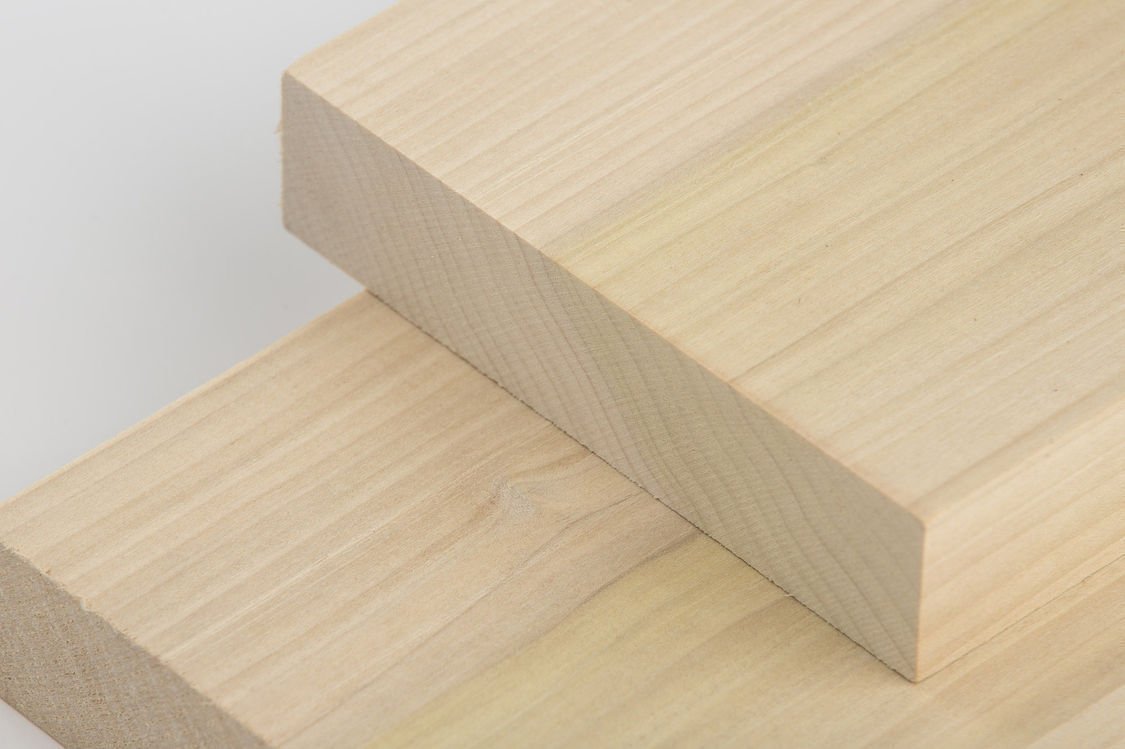
A number of poplars are found growing in the British Isles and Europe. Six main types are found in The UK, with the grey poplar, the black poplar and the aspen being usually regarded as indigenous species, while the white poplar, Lombardy poplar and the hybrid black Italian poplar have also been introduced.
With the exception of the white poplar and aspen, the trees reach a height of 30m; the two former species seldom exceed 18m in height. The diameter of all types is around 1m.
Poplar can be grouped with willow, lime and horse chestnut, since they are all soft, fine textured woods, generally without lustre and without any characteristic colour. Poplar wood is generally whitish or greyish in colour, but may also be light brown, with no clear distinction between sapwood and heartwood. It is usually straight grained without odour, uniform in appearance, rather woolly to its touch, and light in weight. The various species weigh about 450 kg/m3 when dried, although the grey poplar is usually a little heavier at 480 kg/m3. Commercially, the general quality of poplar reaching the market varies considerably according to the area of production, and the degree by which the many species and their hybrid formats are grey poplars is generally of relatively low quality, with a very wide, whitish sapwood and a reddish brown heartwood. Much of the poplar from France and Belgium is generally composed of timber of the black poplar group.
Dries rapidly and fairly well, with a tendency to retain local pockets of moisture, and for knots to split.
For their weight, poplar timbers are relatively strong and tough, and in their dried state, and depending on type, are only about 15 to 30% inferior to European oak in all strength properties except hardness and shear, where they are about 50% inferior.
Perishable.
Black Italian poplar is reputed to have the best working properties, with white and grey poplars having the worst, tending to bind on the saw, and to produce a woolly surface. All types, with the exception of the aspen, are slightly tough in working. Aspen compares more closely to lime in this respect. A good finish is obtainable with all species, however, if thin, sharp-edged tools are employed. They can be glued satisfactorily, and take paint, polish and varnish quite well, but while they can be stained, the wood accepts the stain with patchy results.
Its toughness and non- splintering, woolly nature, makes poplar ideally suited for the bottoms of lorries, railways wagons and carts subjected to rough usage. It produces good constructional veneer for plywood, chip-baskets, and splints for matches. It is used in furniture for framing and drawers, for interior joinery, beer-cask hives, toys, industrial and domestic flooring, boxes and crates, and as an alternative to alder for hat blocks.